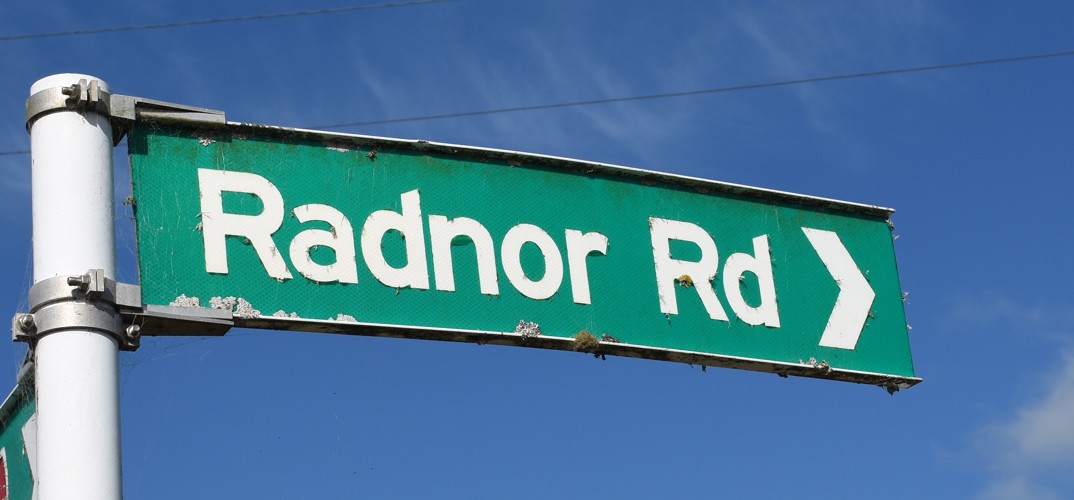 Radnor Road sign (2022). Mike Gooch. Word on the Street image collection.
Radnor Road sign (2022). Mike Gooch. Word on the Street image collection.
 Radnor Road sign (2022). Mike Gooch. Word on the Street image collection.
Radnor Road sign (2022). Mike Gooch. Word on the Street image collection.
In 1877, Albert Fookes developed the town of Midhirst on a large block of land he owned. The history of Radnor Road has been dominated by the small town it intersects with.
Radnor Road is named after a small settlement in Cornwall, England. The first settlers moved on to it in the late 1870s and, with plenty of bush to clear, there was a sawmill operating by the early 1880s. Later a small diary factory was built. It closed in 1924 when farmers began transporting their milk to Midhirst.
As the population in the area increased, establishing a school became a priority. On the no-exit road, pupils further along Radnor Road faced long journeys to and from other schools, only partly funded by what many parents considered an inadequate government subsidy. Some students preferred walking across paddocks to a school on Pembroke Road.
Unsuccessful submissions were made to link Radnor Road through to Denbigh Road. Someone even suggested cutting a pedestrian track through paddocks to the Denbigh Road School. Eventually a temporary school was opened in one room of a house on Radnor Road. In 1916 a separate school was finally built, catering for 18 pupils.
A trend in the depths of the depression years was for smaller rural communities to form sports clubs. The school had a tennis court, so in 1932 the Radnor Road tennis club was formed. The club enjoyed its share of successes in the Petrie Shield tennis competitions up to the war years.
In 1938 the school, with a roll of 12 pupils, was closed and the school building shifted to Midhirst. When the tennis club went into recess, the nearest club still operating was in Midhirst.
This story was originally published in the Taranaki Daily News.
Please do not reproduce these images without permission from Puke Ariki.
Contact us for more information or you can order images online here.